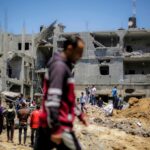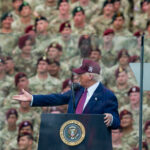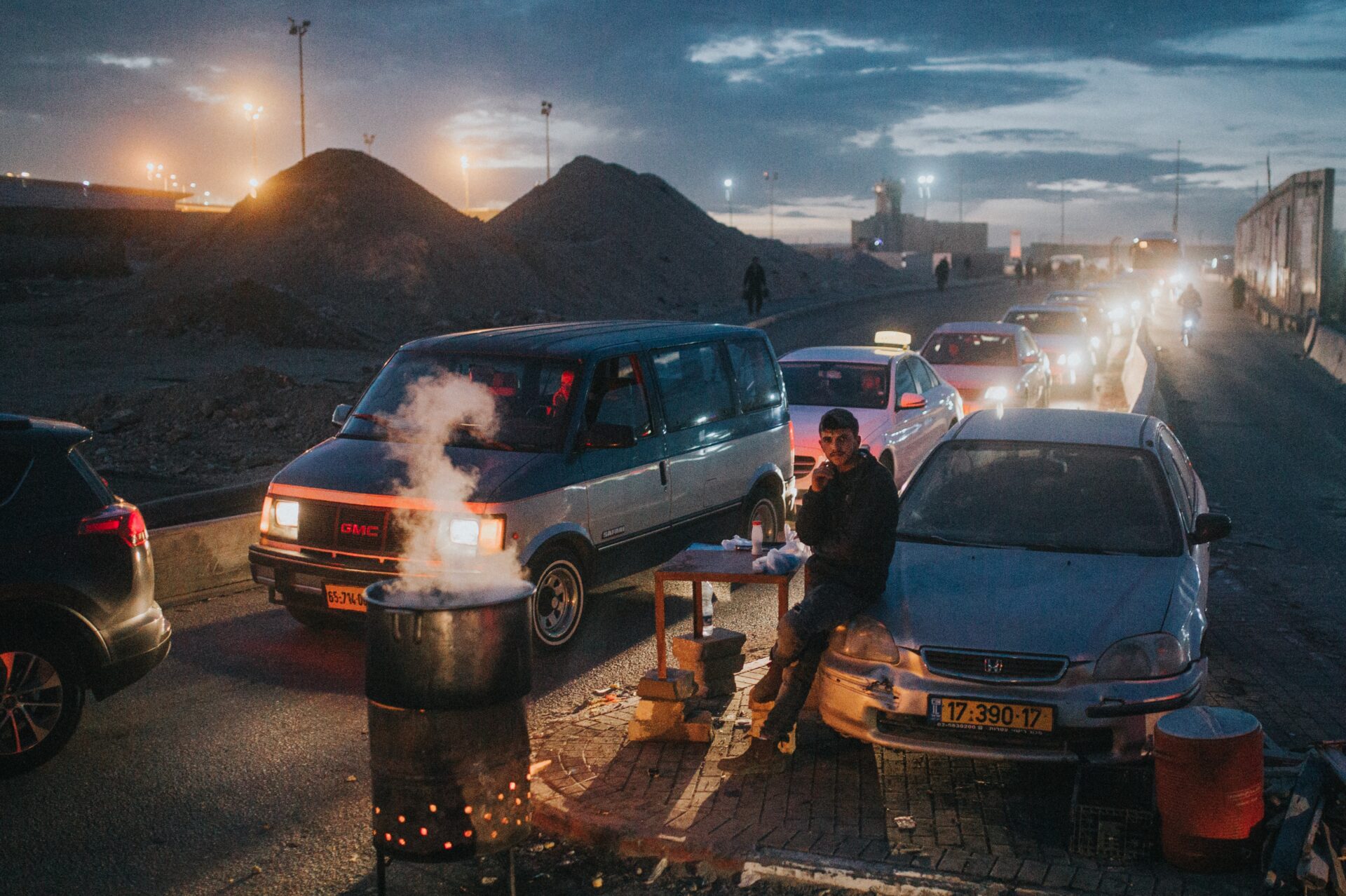Since Oct. 7, when Hamas-led fighters carried out an attack that killed some 1,200 people in Israel, my morning routine has involved being glued to the screen as news of tragedies pours in by the minute. Will there be another story confirming the death of a friend who has been missing for weeks? Gruesome images of those whom an airstrike killed in a crowded Gaza refugee camp? A eulogy my friend wrote to his parents, both killed on his kibbutz? A photo of Palestinian men in Gaza lined up, stripped of their clothing and with their hands tied? Testimonies of sexual violence carried out by Hamas?
I recover with coffee and work at the Friends Committee on National Legislation. Our Middle East Policy team is made up of myself, a Jewish Israeli-American, and Hassan, a Jordanian-American with family in the occupied West Bank. For the past two months, we’ve been lobbying every day for a ceasefire and any means to deescalate the war.
A few months ago, before moving to Washington DC, I graduated from a small college located some 10 minutes from Israel’s boundary with the Gaza Strip. Many classmates grew up in the area and have probably spent the last two months sheltering under rocket fire launched from inside the besieged enclave. All but one survived the Oct. 7 attacks. Some students were Arab Bedouins, mostly identifying as Palestinians, with family on both sides of the Gaza border.
In the three years I spent studying so close to Gaza, I can’t remember talking about what’s happening inside the Strip more than a couple of times. We never addressed the fact that before Oct. 7, more than 90% of Gaza’s freshwater was undrinkable. We never discussed the alarming rates of Gazan unemployment, leaving Hamas as one of the only options for a consistent paycheck. We didn’t discuss how Gazans were often denied entry for medical treatment in Israel, dying with life-saving treatment only minutes away.
Spiraling Nationalism
To me, it’s always been clear that the average Israeli’s refusal to address what’s happening across the scattered borders between us and Palestinians is dangerous to everyone. But my work with some incredible local human rights organizations exposing Israelis to relevant issues was not enough.
The spinning wheels of nationalist indoctrination were so powerful they managed to bring to power the most extremist government in Israeli history, with more representation for extreme right-wing parties like Otzma Yehudit, or the National Religious Party. These parties have landed some of the most high-ranking positions in the Israeli government. Take, for instance, the Minister of National Security, Ben Gvir, a man previously convicted of incitement to racism and supporting a terrorist organization, or Minister of Finance Bezalel Smotrich, who has called on the government to “wipe out” entire Arab villages and does not want his wife to give birth beside an Arab woman. And under this very government, Israel has become home to what was apparently the deadliest attack on Jews since the Holocaust.
Every Gaza resident I’ve spoken with since the temporary truce broke earlier this month has said that there is no place safe.
Currently, more than 18,000 Palestinians in Gaza have been killed, more than half of whom were women and children. This is more than one in 130 Gaza residents killed and counting. Upward of 1.8 million of the Strip’s estimated 2.3 million people are internally displaced. A dire lack of food and water has led to testimonies of death by dehydration, malnutrition, and the spread of disease. One friend in Gaza has lost more than 40 family members. Another sends updates on a weekly basis that he is still alive. Every Gaza resident I have spoken with since the temporary truce broke earlier this month has insisted that there is no place safe in the Strip.
Before Oct. 7, expressing the need for equality between Palestinians and Israelis was considered radical in Israel. Now, Israelis have been attacked, both verbally and physically, for calling for a ceasefire. Or for calling out war crimes, such as Israel’s failure to make all feasible precautions to distinguish between civilian and military targets and minimize civilian harm. Or for criticizing Israel’s cutting off of water, food, and aid to millions of people. If the social taboo wasn’t enough, the current Israeli Minister of Communications, Shlomo Karhi, is in the process of pushing through regulations that would authorize the arrest of individuals and seizure of property based on the subjective judgment that their communication undermines “national morale.”(This article, for example, could fall under such a category.)
Shamed and Threatened
Don’t get me wrong. The attacks on Oct. 7 scarred me deeply. Most of my friends and family are busy burying loved ones or caring for those in mourning and enduring trauma. Some are trying to provide what the Israeli government either cannot or will not: basic medical supplies, food, shelter, and psychological aid to more than 200,000 internally displaced Israelis. Some Israelis see this as an opportunity to weaponize by killing or displacing as many Palestinians in the West Bank as possible. There seems to be a lack of recognition of the unimaginable plight of Gaza’s people.
The unbearable truth, though, is most Israelis weren’t looking towards Gaza when they had the clarity to do so. Those who did and still do are being shamed, threatened, or attacked. Some of my colleagues and friends have received death threats online, while others’ names and addresses have been circulated among extremists who are willing to attack them. One journalist, Israel Frey, was attacked in his own home after reciting the mourner’s kaddish for Palestinians killed in Gaza the week following Oct. 7th. Since his attack, he has been in hiding. Israeli officials have continued spewing rhetoric that dehumanizes more than two million people, calling for a Nakba (Arabic for “catastrophe”) in Gaza, the creation of “sterile zones” in the West Bank, or flattening Gaza with a nuclear bomb. Meanwhile, the war continues to pose a serious risk of a new front with the Lebanese militant group Hezbollah, the possibility of compromising our hostages’ lives, or even a full-blown regional conflict.
International support for Israel’s war is cracking day by day. Most Americans agree a ceasefire is needed, but only 63 members of Congress have called for one. In mid-November, after more than a month of war and amid mounting criticism, President Joe Biden defended his administration’s refusal to call for a ceasefire.
To those opposing an end to this war, I would pose a simple question: Where, and at what cost, do you draw the line? If the line doesn’t exist, if it hasn’t been passed already, perhaps history has taught you nothing.














